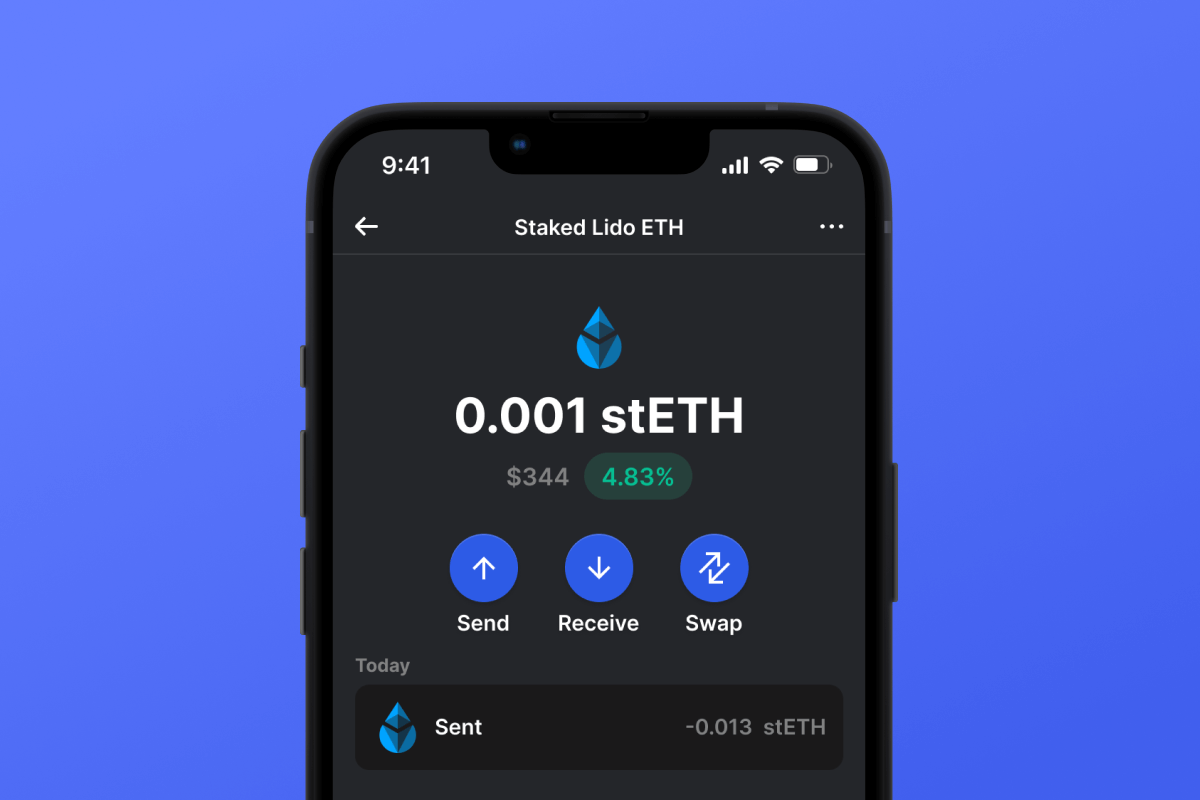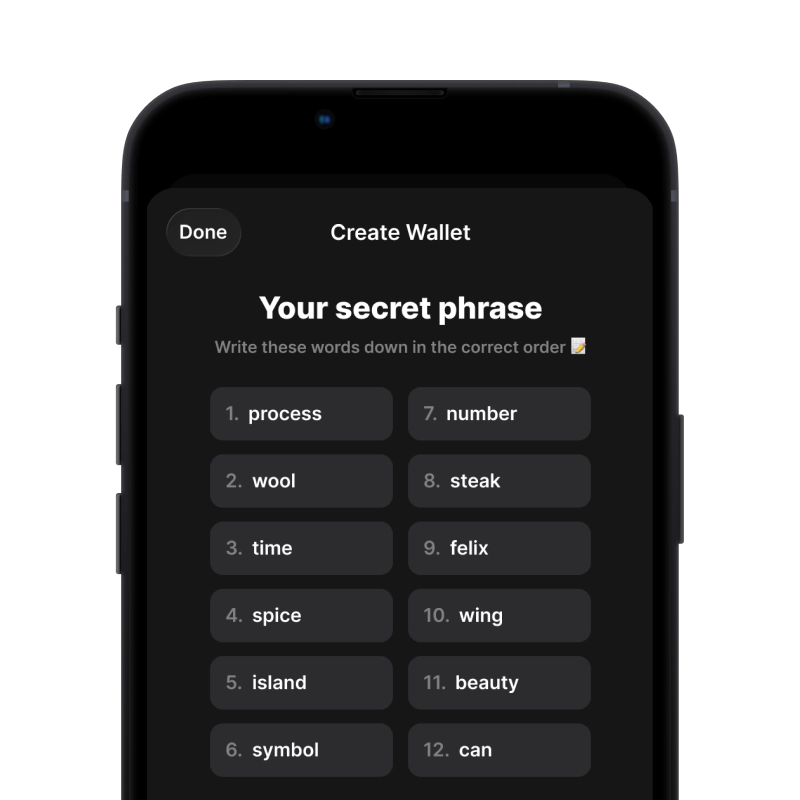Qu'est-ce que le Lido ETH jalonné (stETH) ?
Le Lido ETH jalonné, ou stETH, est une version tokenisée, également appelée Liquid Staking Derivatives (LSD), du Ethereum (ETH) jalonné. Ce jeton représente vos avoirs ETH jalonnés dans le contrat de dépôt Ethereum 2.0, ainsi que des récompenses, sous une forme liquide et négociable.
- Le staking consiste à participer à un système de preuve d'enjeu (PoS) pour soutenir le fonctionnement d'un réseau blockchain.
- Les jetons stETH permettent aux détenteurs de gagner des récompenses grâce au staking Ethereum 2.0 tout en conservant la liquidité.
- La valeur de stETH augmente au fil du temps à mesure qu'elle accumule des récompenses de jalonnement, reflétant directement les récompenses du jalonnement Ethereum.
- stETH est conçu par Lido, une solution de jalonnement liquide pour Ethereum.
Questions clés
Quand stETH a-t-il été créé ?
Le Lido ETH jalonné (stETH) a été introduit en décembre 2020 dans le cadre de l'offre de la plateforme Lido.
Qui a créé stETH ?
stETH a été développé par Lido, une plateforme décentralisée et autonome conçue pour résoudre le problème de liquidité associé au jalonnement d'Ethereum.
Quel est le prix de stETH ?
Pour connaître le prix actuel de l'ETH Lido stadé (stETH), veuillez vous référer à votre portefeuille Gem.
Le stETH est-il un bon investissement ?
Bien que le stETH offre la possibilité de gagner des récompenses de jalonnement et de maintenir la liquidité, la décision d'investir doit être basée sur des recherches personnelles, la tolérance au risque et les circonstances financières.
Comment fonctionne le Lido ETH stadé (stETH) ?
Le Lido ETH (stETH) mis en jeu fonctionne dans le cadre du mécanisme de jalonnement du réseau Ethereum 2.0. Lorsque vous jalonnez votre ETH avec Lido, vous recevez en retour un montant équivalent de jetons stETH. Ces jetons représentent votre ETH mis en jeu plus toutes les récompenses gagnées grâce au jalonnement. L'aspect innovant du stETH est qu'il est liquide, ce qui signifie qu'il peut être échangé, transféré ou utilisé dans des applications DeFi même s'il continue de gagner des récompenses de jalonnement.
Les principaux aspects du stETH sont les suivants :
- Jalonnement : les utilisateurs jalonnent l'ETH avec Lido et reçoivent du stETH en retour.
- Récompenses : Le solde des jetons stETH augmente automatiquement à mesure que les récompenses de jalonnement sont accumulées.
- Liquidité : Les jetons stETH peuvent être échangés ou utilisés dans les protocoles DeFi, offrant une liquidité qui n'est pas disponible avec le jalonnement traditionnel.
- Décentralisation : Lido utilise un réseau décentralisé d'opérateurs de nœuds pour effectuer le jalonnement, améliorant ainsi la sécurité et la confiance.
Que sont les dérivés de jalonnement liquide (LSD) ?
Les dérivés de jalonnement liquide (LSD) représentent les actifs jalonnés d'un utilisateur dans un protocole de blockchain. Par exemple, lorsque les utilisateurs stakent leur Ethereum (ETH) auprès d'un fournisseur de staking liquide, ils reçoivent un LSD, qui est un jeton de réception. Ce jeton est similaire à la plupart des autres jetons de crypto-monnaie dans la mesure où il est entièrement fongible, transférable et fractionnaire.
Les LSD débloquent essentiellement la liquidité de l'ETH jalonné, qui est temporairement verrouillée. Le LSD a une valeur similaire à l'ETH jalonné sous-jacent et permet aux utilisateurs d'utiliser indirectement leur ETH jalonné dans des activités DeFi. Ces activités peuvent inclure la vente du LSD, sa fourniture sous forme de liquidité dans un pool, son prêt ou son utilisation comme garantie pour un prêt. Ce processus permet aux utilisateurs de gagner un rendement supplémentaire en plus de leurs récompenses de jalonnement.
Différents fournisseurs proposent des produits dérivés de jalonnement liquide, notamment :
- Lido Finance (LDO) : Lido est un leader du jalonnement liquide. Les utilisateurs déposent des ETH et reçoivent du stETH, un jeton de réception qui représente leur ETH jalonné. Lido prend une commission de 10 % sur les récompenses de jalonnement. Ils ont également introduit une version encapsulée de stETH appelée wstETH, dont la valeur augmente au fil du temps au lieu d'augmenter en solde. Au moment de la publication de l'article, Lido avait une valeur totale d'environ 7,2 milliards de dollars en ETH jalonnés, générant plus de 32 millions de dollars de revenus annualisés.
- Rocket Pool (RPL) : Rocket Pool est l'un des plus grands protocoles de jalonnement liquide ETH après Lido et se concentre sur la décentralisation. Les utilisateurs mettent en jeu un minimum de 16 ETH et 1,6 ETH de RPL, le jeton de gouvernance de Rocket Pool, pour devenir un opérateur de nœud. Les stakers reçoivent rETH lors du dépôt, qui accumule une valeur similaire à wstETH. Rocket Pool prend une commission de 5 à 20 % des récompenses de jalonnement et les donne entièrement aux opérateurs de nœuds directement.
- Frax Finance : Frax Finance a lancé un service de jalonnement liquide ETH qui transforme l'ETH en frxETH, un LSD ETH. En janvier 2023, l'ETH jalonné de Frax Finance avait augmenté de 40 %, marquant une croissance en pourcentage significative par rapport aux autres protocoles LSD, ce qui lui permet de revendiquer sa position comme l'un des principaux fournisseurs de jalonnement liquide.





 TIA
TIA  SEI
SEI  ATOM
ATOM  INJ
INJ  SOL
SOL  OSMO
OSMO  TRON
TRON  SUI
SUI  HYPE
HYPE  BNB
BNB 

